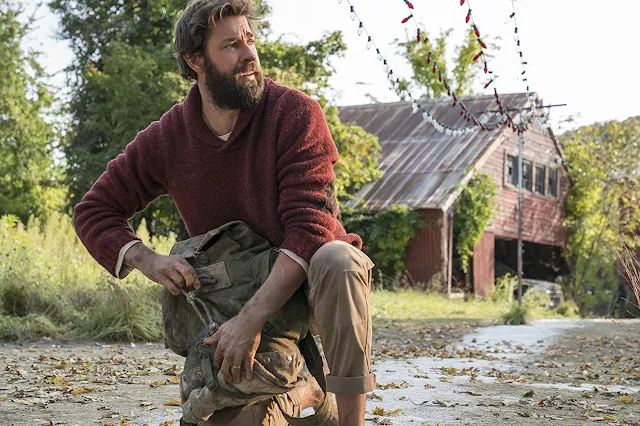A blog formerly known as Bookishness / By Charles Matthews
"Dazzled by so many and such marvelous inventions, the people of Macondo ... became indignant over the living images that the prosperous merchant Bruno Crespi projected in the theater with the lion-head ticket windows, for a character who had died and was buried in one film and for whose misfortune tears had been shed would reappear alive and transformed into an Arab in the next one. The audience, who had paid two cents apiece to share the difficulties of the actors, would not tolerate that outlandish fraud and they broke up the seats. The mayor, at the urging of Bruno Crespi, explained in a proclamation that the cinema was a machine of illusions that did not merit the emotional outbursts of the audience. With that discouraging explanation many ... decided not to return to the movies, considering that they already had too many troubles of their own to weep over the acted-out misfortunes of imaginary beings."--Gabriel García Márquez, One Hundred Years of Solitude
Search This Blog
Showing posts with label Charlotte Bruus Christensen. Show all posts
Showing posts with label Charlotte Bruus Christensen. Show all posts
Thursday, October 10, 2019
A Quiet Place (John Krasinski, 2018)
A Quiet Place (John Krasinski, 2018)
Cast: Emily Blunt, John Krasinski, Millicent Simmonds, Noah Jupe, Cade Woodward, Leon Russom. Screenplay: Bryan Woods, Scott Beck, John Krasinski. Cinematography: Charlotte Bruus Christensen. Production design: Jeffrey Beecroft. Film editing: Christopher Tellefsen. Music: Marco Beltrami.
Given the generally enthusiastic critical and audience reception of A Quiet Place, I was prepared to enjoy it. And for the most part I did. I liked the prevailing mood of the film, its sure-footed pacing and neatly timed shocks. But I am such an inveterate skeptic, such an indefatigable asker of Questions You're Not Supposed to Ask, that I wasn't completely won over. I found myself wondering why the Abbotts, so nicely played by John Krasinski and the always wonderful Emily Blunt, would conceive another child in the midst of post-apocalyptic horror. They have taken so much care, especially after the loss of one of their children, to maintain a life of silence, then why would they risk it all for such an uncontrollable noisemaker as an infant? And then, when their daughter discovers that the feedback from her malfunctioning hearing aid could disable one of the predators, I wondered why scientists and the military hadn't already figured out that the best way to attack creatures who hunt by sound is to turn that sense against them, or if they have, why they haven't come to the rescue of the Abbotts and their neighbors. These are quibbles, of course, but A Quiet Place is meant to be taken fairly seriously, as a drama of family dynamics -- the daughter feels guilty for the death of her little brother and thinks her father doesn't love her, while her remaining brother feels like he can't live up to the heroics of his father and her mother blames herself for the death of the child. In the end everything is subordinated to shocks and thrills, so that the film ends up like a more sophisticated version of a 1950s invaders from outer space movie, or a better-made episode of a series like The Walking Dead.
Friday, January 15, 2016
Far From the Madding Crowd (Thomas Vinterberg, 2015)
It's not really easy for me to comment on one version of the Thomas Hardy novel after just commenting on another without resorting to comparisons, so I won't even try to avoid them. One unavoidably obvious difference between the 2015 film and the 1967 John Schlesinger version is visual. In Schlesinger's film, despite the fine cinematography of Nicolas Roeg, the interiors seem impossibly overlighted for a period that resorted to candles and oil lamps for illumination. The change in film technology now makes it possible for us to see the way people once lived -- in a realm of darkness and shadows. (We can almost precisely date when this change in cinematography took place: in 1975, when director Stanley Kubrick and cinematographer John Alcott worked with lenses specially designed for NASA to create accurately lighted interiors for Barry Lyndon. Since then, the digital revolution has only added to the arsenal of lighting effects available to filmmakers.) So cinematographer Charlotte Bruus Christensen's adds an element of texture and mystery to Thomas Vinterberg's version that was technologically unavailable to Roeg, and not only in interiors but also in night scenes, such as the first encounter of Bathsheba (Carey Mulligan) and Sgt. Troy (Tom Sturridge), when he gets his spur caught in the hem of her dress. The scene is meant to take place by the light of the lamp she is carrying, which Christensen accomplishes more successfully than Roeg was able to. But the story's the thing, and David Nicholls's screenplay is much tighter than Frederic Raphael's 1967 version -- it's also about an hour shorter. Nicholls makes most of his cuts toward the end of the film, omitting for example the episode in which Troy becomes a circus performer, one of the more entertaining sections of the Schlesinger-Raphael version. I think Nicholls's screenplay sets up the early part of the stories of Bathsheba and Gabriel Oak (Matthias Schoenaerts) much better, though he has to resort to a brief voiceover by Mulligan at the beginning to make things clear. His account of the affair of Troy and the ill-fated Fanny Robbin (Juno Temple) is less dramatically detailed than Raphael's, but in neither film is their relationship dealt with clearly enough to make us understand Troy's character. On the whole, I think I prefer the new version, which is less star-driven than Schlesinger's, but I can't really say whether I would feel that way if I had seen the new one first.
Subscribe to:
Comments (Atom)





















.jpg)